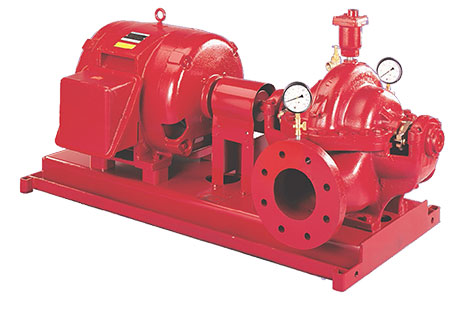
What type of driver should be used for a fire pump?
Fire pumps are needed for life safety situations and need to run when called upon in an emergency. The National Fire Protection Agency (NFPA) develops the standard by which fire pump systems are designed and installed. The equipment installed in these systems, including drivers, are verified and listed by third-party underwriting organizations to comply with the required standards.

Fire pumps are typically driven by electric motors or by diesel engines. Consideration must be given to ensure that electricity or enough fuel is available to operate these drivers in the case of fire. Engines are typically used as drivers for pumps where there is an unacceptable risk of interrupted, unreliable, unavailable or an unsuitable electrical power source.
In addition, fire pump applications require a backup power source and a transfer switch. Engines that are classified as spark ignition (gasoline or engines fueled by natural gas) are not allowed due to possible unreliability for emergency, standby service. In the case of a fire pump, diesel engines are the standard.
The most common means of starting an engine is with an electric motor starter. For fire pumps, two electric starters, each connected to an independent battery supply, are required. Another option is to have one starter connected to two separated start solenoids that are then connected to their own battery supplies.
The most common engine voltage employed is 12 volts (V) direct current (DC) for engines rated less than 300 kilowatts (kW), or 400 brake horsepower (BHP) approximately.
For more information on the specific types of rotodynamic pumps, their drivers and their application, refer to Hydraulic Institute (HI)/American National Standards Institute (ANSI) standard 14.3 Rotodynamic Pumps for Design and Application at www.pumps.org/standards.

